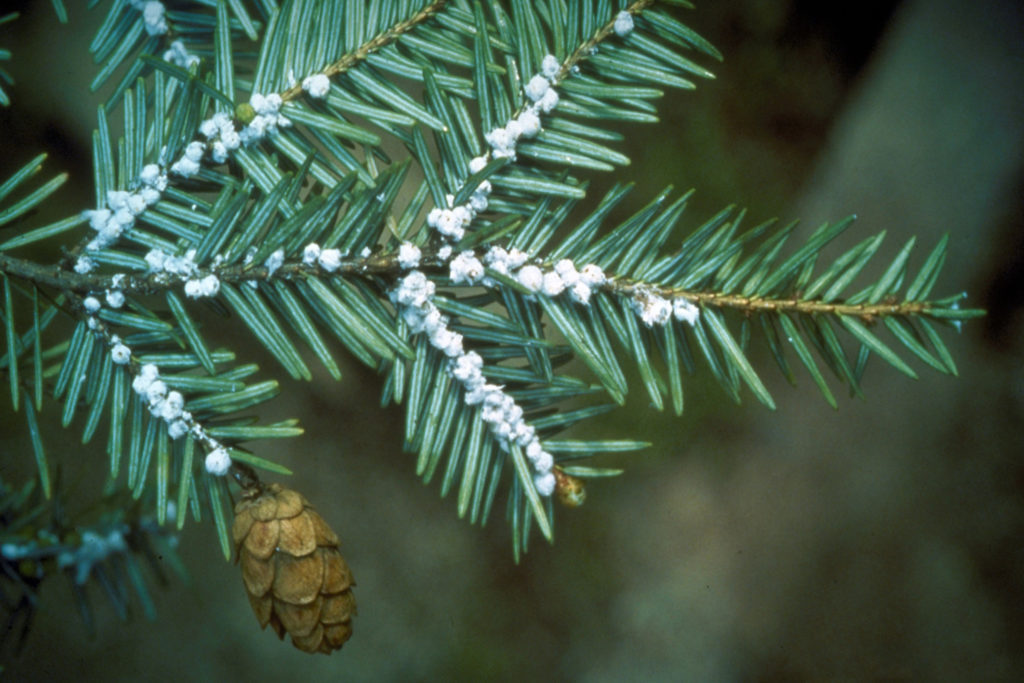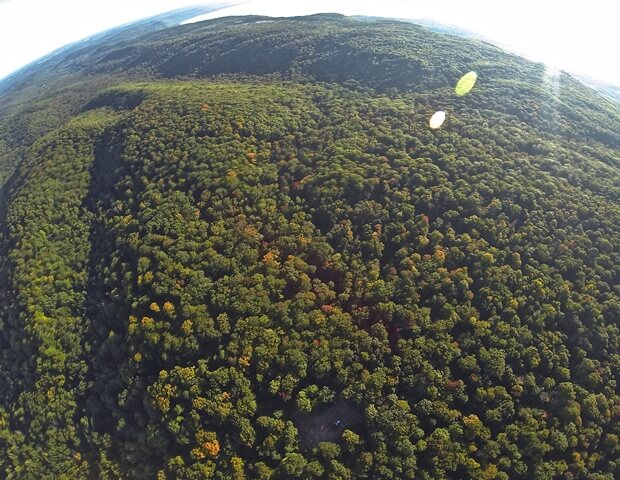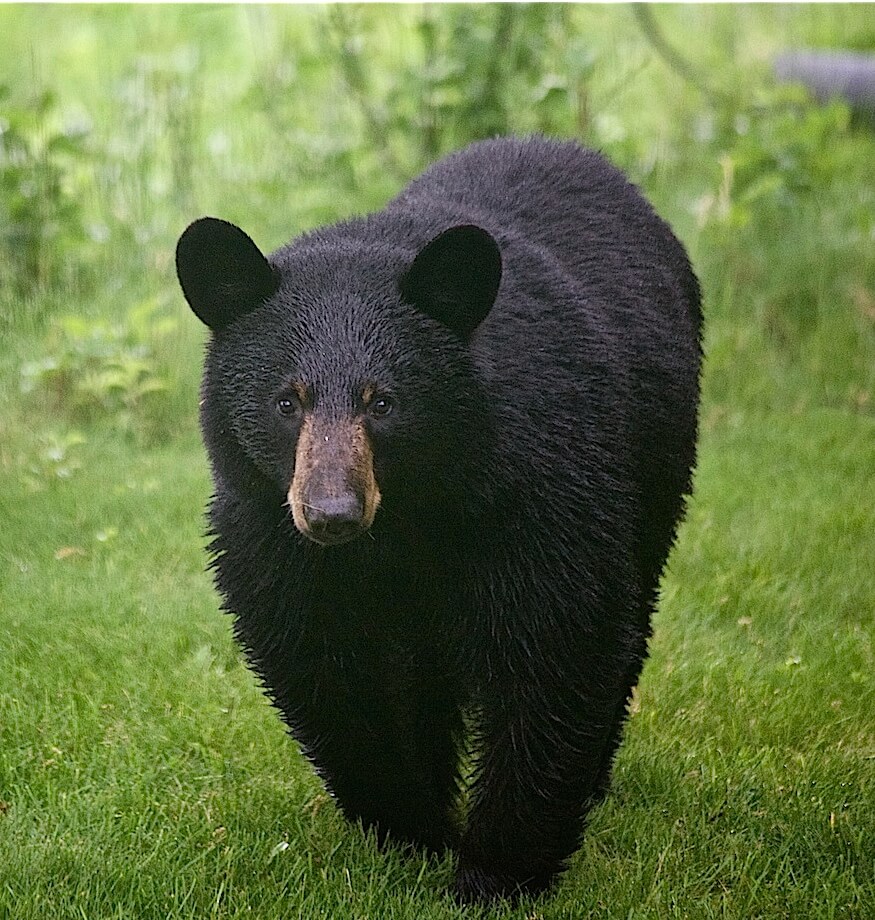By Jeannie Williams, Conservation Easement Monitor
This article originally appeared in our 2019 Conservation Easement Landowner Newsletter.
I’ve walked nearly 100 conservation easements in Leelanau County this year. These walks have given me a good look at the state of our forests. Between the loss of ash trees from emerald ash borer and beech trees falling in increasing numbers in recent years from beech bark disease, plus the high winds that came through in 2015, it is easy to worry about the state of our forests. Can we lose this many trees and still keep a functional forest? What can a landowner do in response to these serious disturbances?
One course of action, as a landowner, is to let nature take her course. I have incredible faith in nature and in the forest to recover from damage. However I have come to see that “let nature take her course” ignores the limitations that nature faces and gives humans a free pass. Leelanau’s forests face four important challenges: invasive species, non-native disease, fragmentation, and climate change. That means we humans are needed more than ever to help Mother Nature maintain forest health.
Decades ago, invasive species were not commonly found in Leelanau. Today, with invasive species more prevalent, it can be difficult for a forest or an open area to populate naturally and free of invasive species, since these plants are phenomenally good at taking advantage of disturbance.

New tree diseases are another impediment facing Mother Nature. Do you remember American elm? Elm was once common throughout Michigan and today is essentially eliminated from our forests by invasive pathogens. Now, ash, beech and red oak are also facing diseases. On the horizon, eastern hemlock are threatened by hemlock wooly adelgid and maples by Asian longhorned beetles. Without these tree species, often the most common species in the forest, it becomes much more difficult for nature to create a functional forest on her own.
Habitat fragmentation and development further restrain nature. In many places, wild lands are no longer contiguous with other wild lands. Highways, neighborhoods, cities, suburban areas, and industrial parks separate forests, fields, and wetlands from each other. Human settlement interferes with nature’s ability to flow through the landscape, which matters when existing habitat becomes less suitable, or when species require large areas for survival. Fortunately, Leelanau County still maintains a large amount of habitat continuity, but on a larger scale, northern Michigan forests are largely separated from those of Southern Michigan by fragmentation.

Finally, there is climate change: rapid temperature increase and radical weather pattern shifts that strain our ecosystems and wildlife. Extreme weather, out of order weather, increasing temperatures, and more temperature extremes mean that the species in place now may be quite uncomfortable in the relatively near future and would benefit from range expansion, from moving further north, or to a more sheltered locale.
All together, these challenges may seem daunting. Luckily, there are many ways you can help Mother Nature to keep Leelanau’s forests healthy. You as a landowner have an opportunity to fulfill the dream that was planted in your mind when you purchased or created your conservation easement. That dream was to provide a space for wildlife: food, habitat, and shelter for the animals large and small. The black bear, the bobcat, the porcupine, the scarlet tanager, the butterfly, the honeybee. That dream was also to provide natural spaces for your family and loved ones to enjoy and rejuvenate in. And finally, it was to maintain ecosystems services such as clean water, soil protection, erosion control, shade, and beauty.
What can you do to help?
Given your conservation desires, and nature’s challenges in assisting you in the face of the rapid changes occurring in our forests, we encourage you to take active steps to manage your land. One satisfying and effective action is to plant trees, annually if possible. This year, consider planting trees whose native ranges end just south of here, yet are projected to do well in our region according to research out of the USDA Northern Hardwoods Research Station, through a process called assisted tree range expansion.
Trees like swamp white oak, shagbark hickory, hackberry, tulip tree, sassafras, and black gum have high potential to thrive in our forests since climate change has made our area hospitable for species that are native to southern Michigan. These trees also have the potential to fill in wildlife food gaps, which are imminent as beech continues to decline and nutritious beech nuts disappear. Black bears will need a food source that replaces beechnut and these trees can help.

This spring, the Leelanau Conservation District will be selling a selection of trees whose comfortable ranges are expanding north at their annual tree sale. You may order and purchase trees in bundles of five (single species, not mixes). Then, get to know your trees by visiting them at least once a year and checking in on their growth and health. You can participate in the Conservation District’s new citizen science initiative, the Assisted Tree Range Expansion Program (ATREP) by taking some basic annual measurements: height and then diameter when the tree is over six feet tall. Data from ATREP participants will help our Conservation District and agencies such as the office of Environment, Great Lakes, and Energy (EGLE) and Sleeping Bear Dunes National Lakeshore assess the viability of planting these species on a wider scale.
Our forests depend on landowners like you who are attentive to their land. Walk around, notice things, and ask questions. If you see unusual activity on the bark of a tree or notice a species you haven’t seen before, or are aware that a tree seems to be declining because the leaves look strange and you haven’t noticed that before, bring it to the attention of our District Forester Kama Ross. She can then respond to your particular observations and needs, and can further develop plans and attract additional resources if there are regional needs. Your District Forester is there to answer questions and help you be the best steward of your woodlot.
Landowners have a lot of power to support our natural landscapes, which goes far beyond creating a conservation easement. The impacts of keeping land from development are magnified by your engagement with the land, your attention to it, and your knowledge and management of it. Contact your District Forester, Kama Ross at the Leelanau Conservation District by calling 231- 256-9783 or emailing kama.ross@macd.org. Tree orders can be placed with the Leelanau Conservation District in February for pick up in late April. Follow them on Facebook at https://www.facebook.com/leelanaucd/ or check out the website at https://www.leelanaucd.org/. Find out more about the Assisted Tree Range Expansion Project (ATREP) here: https://www.atrep.net/. Thank you for being a forest steward.




